
The purpose of the study was to define the chronical aspect of the sport event and suggest timeline concepts include the work scope of the sport event organization. For accomplish the research goal, literature review on time frame of sport event and the in-depth interview(n=23) was fulfilled. The results of this study were as follows; 1) the time based concept and the perception of the point of phase transition is different in each functional area, 2) the sport event time-frame could be categorized in ex ante Event stage, Event operation stage and ex post Event stage as general and the Event operation stage was departmentalized in preparation phase, Game delivery phase and closure phase. As a result, this study suggested the transition criterion in each phase. Limitations and future directions for real time sport event organization were discussed.

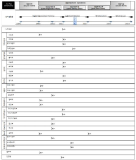
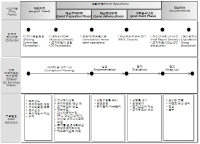
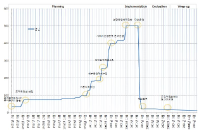
This article aims to examine the research trend of sport history by analysing published research articles over the last decade in the Korean Journal of History for Physical Education, and suggest directions of research in sport history based on the results. We have reviewed a total of 264 articles relying on the analytic framework including the criteria of time period, method, nation, theme/topic, and purpose. The research findings are as follows. First, the post-Liberation period has been studied most often with 45.3%, followed by the Japanese Colonization period (20.2%), the Joseon Dynasty period (11.4%), the diachronic research (8.8%), the period from ancient times through Goryeo (8.1%), and the period of Enlightenment (6.2%). The results indicate that most recent studies in the journal unilaterally focus on the Modern and Contemporary history with 71.7%. According to the analysis result by research method, second, more than 90% of the studies have been conducted using qualitative methods while only 0.6% of the papers have adopted quantitative methods. The qualitative methods include textual analysis, participant observation, oral life story, and focus group interview. Textual analysis has been used most often with 74.5%. Oral life story has been second (22.5%), followed by participant observation (2.1%) and focus group interview (0.3%). The findings from this category show that it is still necessary to diversify research methods and vitalize interdisciplinary research. Third, in terms of nation, over 70% of the papers have studied about Korea, and European countries are the second most frequent region in the research trend (8.3%). The nation that follows is China with 6.4%. Although we analysed a Korean journal in sport history, the result exposes the lack of scholarly attention in the studies of sport history to world sport history reflecting comparative perspectives. By the criteria of theme/topic, fourth, genre has been studied most often with 31.7%, followed by figure (14.1%), facility/institution/organization (14.0%), system/policy/event (12.8%), philosophy/ideology/theory (6.7%), remains/relics/documentary material (6.3%), and domestic regions (5.4%). The results show that the recently published research articles have attempted to include a variety of genres in sports, play, and dance. While the topics for figure and facility/institution/organization also receive significant interest, it is limited that the studies mostly focus on male sport figures but female figures are barely explored. Even when female figures are researched, the attempts are observed only in the studies of dance. Fifth, the largest ratio of papers has had the research purpose of historical evolution (37.6%), followed by value/significance (20%), type/characteristic (15.5%), thoughts/ideology/theory (9.1%), origin (6.6%), suggestion/proposal/prediction (5%), comparison/correlation (5%), and concept/terminology (1.2%). The results expose that the studies tend to concentrate on historical evolution relying on chronological description while the research on concept/terminology is of little scholarly interest. Based on what we have found, it is identified that the recent studies in sport history have mostly focused on the historical evolution of a specific sport genre in the Korean Modern and Contemporary history using textual analysis. Consequently, the results suggest that researchers in sport studies need to put in additional effort to expand research topics and methods, and invite comparative perspectives involving inter/cross-national studies.
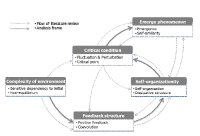
Purpose This study was aimed at interpreting the football talent development stages based on complexity theory. Methods The data for this study was gathered through literature review and in-depth interviews that were analyzed by thematic analysis. Literature review of the studies regarding complexity theory revealed the features of complexity theory and five football players participating in the K-league were interviewed. Gathered materials were analyzed by the thematic analysis. Initial codes and potential themes of football talent development stages, the conception and potential themes of the complexity theory were interpreted by metaphorical analysis. Results Results of literature review were as follows: analysis frame of complexity theory were organized environment of complexity, feedback structure, self-organization, critical condition and emergent phenomenon. The football talent development stages, interpreted as a result of literature review, were divided into Potential Talents, Excellence based Talents Development, Footballizational Talents, Football to Takeoff and Personalization of Football Talents. The stages were specifically materialized as follows: Potential Talents was materialized into physical condition, physical activity preference and change of environment. Excellence based Talent Development was materialized into skill mastery, thoughts about football and relationship with significant others. Footballizational Talents was materilized into skill fractionation, football flow and growth experience. Football to Takeoff was materialized into overcoming crisis experience, performance scaffolding and performance takeoff. Personalization of Football Talents was materialized into manifestation of performance personalization, performance evolution, condition maintenance. Conclusion Football talent development stages, interpreted by means of complexity theory, were divided into Potential Talents stage, Excellence based Talent Development stage, Footballizational Talents stage, Football to Takeoff stage and Personalization of Football Talents stage. Utilization of this study as a fundamental resource of football talents development programs and as a means to understanding football talents development is looked forward to.

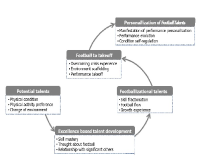
[Purpose] This study aims to examine the research trends in Korean women’s sport history and provide suggestions for future research by reviewing journal articles conducted in the last ten years (2007-2016). [Methods] The articles were selected from the Korean Journal of History for Physical Education, Sport, and Dance, which is the only, representative sport history journal in South Korea. 66 articles identified as studies of women’s (or women-related) sport history were analyzed in five categories, including a) period, b) theme/topic, c) purpose, d) method, and e) country. [Results] Specifically, the analysis by period showed that 90% of the research focused on modern and contemporary history, while only 7% of the research was set in pre-modern history. According to the analysis by theme/topic, genre has been studied most often with 36%, followed by figure (20%) and facility/institution/organization (15%). By the criteria of purpose, it was found that the majority of the research (48%) focused on historical evolution and transition, while the research on comparison/relation was of little scholarly interest. Regarding the category of method, textual analysis was used most often, with 70% followed by oral life history (27%). By the criteria of country, the largest ratio of papers studied Korea (75%) while only 3% of studies examined other East Asian countries, such as China or Japan. Comparative, diasporic, or transnational studies were the second most popular subcategory (11%). [Conclusion] According to the results, it was acknowledged that there has been a significant lack of interest in women’s sport history by Korean scholars and “sport herstory” is largely underresearched. In addition, the excessive concentration on a specific period or a particular theme was also exposed. To rectify the biased research practice and promote scholarly growth and enhancement in both academia of Korean women’s sport history and Korean sport history, it is necessary to consider the expansion of historical materials, application of new methodology, cross-disciplinary conversation, and theorization in studying women’s sporting experiences.